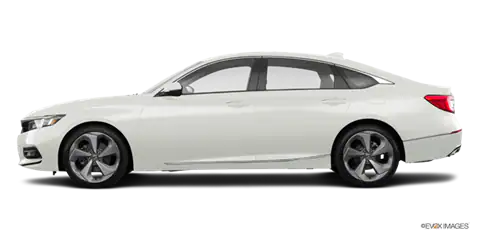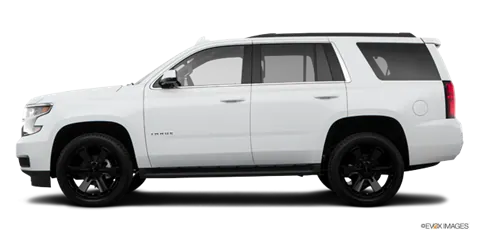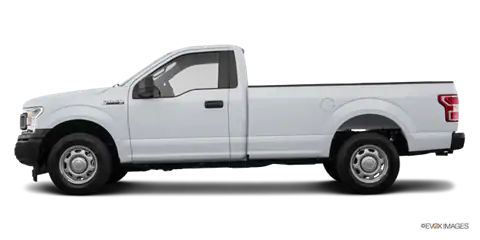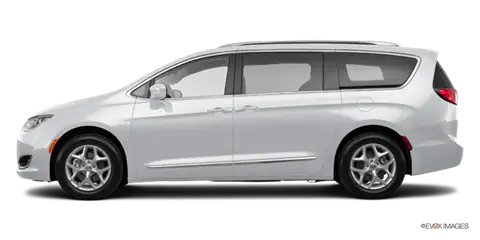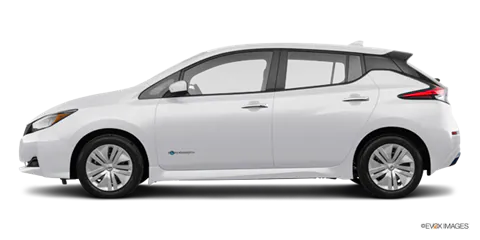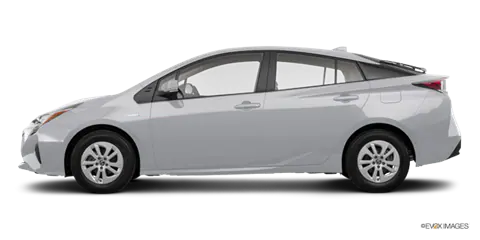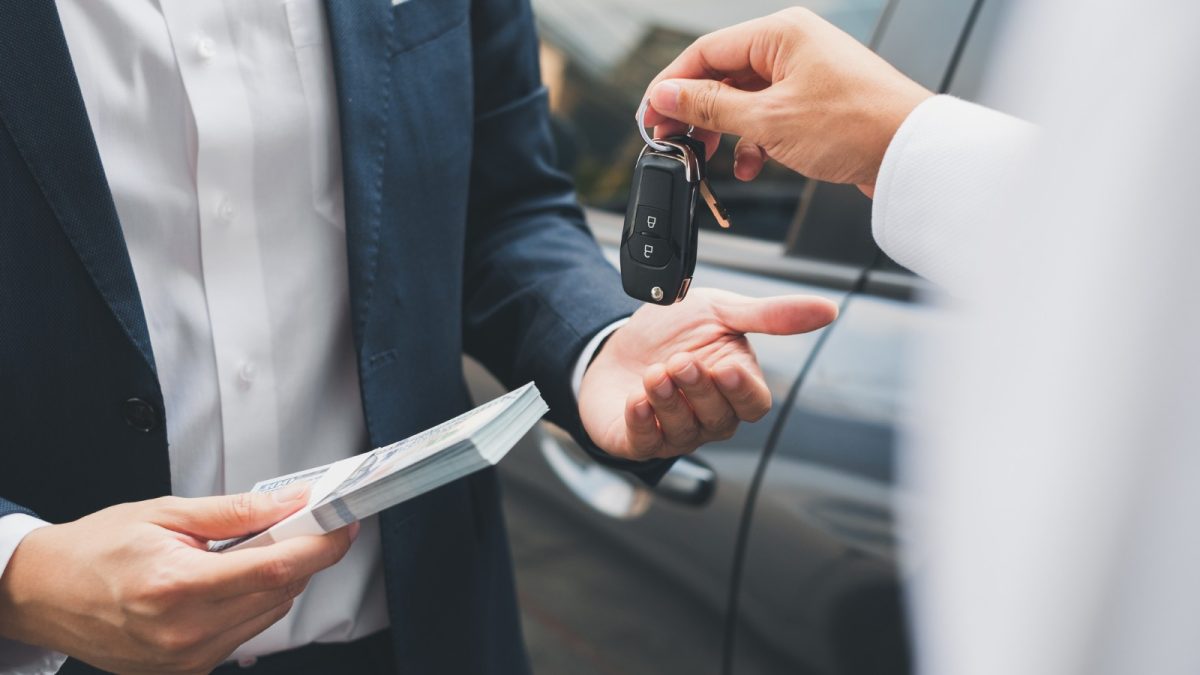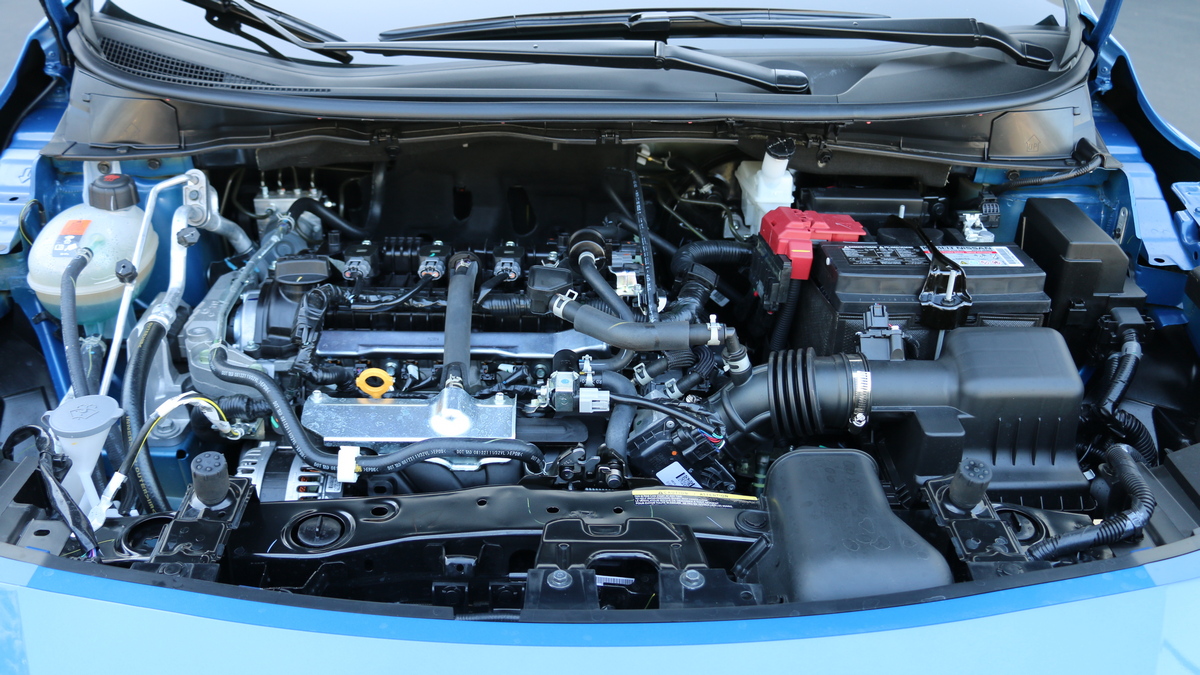What makes the best cars for snow really the best? It’s more than one thing. Consider these key features when driving in snow and other wintery conditions.
To qualify for our picks, vehicles need to boast an effective drivetrain — the array of components from the transmission to the tires. Look for safety and driver-assist technologies, such as rain-sensing wipers, blind-spot monitoring, and so forth. Then, consider comfort or convenience features, such as heated seats and headlight washers, that can make driving a lot easier in snowy weather. Use our jump-ahead links below to get to the section you need.
- Getting To Know the Best Vehicles in Snow
- Which Is Better: AWD or 4WD?
- What Are the Top Safety Features for Driving in Snow?
- How To Interpret Crash Test Scores
- The List: Best Cars for Driving in Snow
Getting To Know the Best Vehicles in Snow
If a vehicle boasts the appropriate combination of our preferred elements, even an inexperienced driver can get by when driving in snow. At the same time, the right combination of features can make even an experienced Snowbelt driver safer and more competent. This is true whether it’s a sedan, an SUV, or a pickup truck.
RELATED ARTICLE: 20 Tips for Safe Winter Driving
The driver is the key factor when driving on snow or ice. The less experience a driver has with snow- or ice-covered roads, the more important the components, technologies, and systems designed to aid the driver in foul weather.
We weighed these factors when making our picks for the best cars and SUVs in the snow. And this year, our top overall pick is the Subaru Outback. Read on to see why.

Which Is Better: AWD or 4WD?
Any discussion of the best cars for snow must begin with the drivetrain. There are pros and cons for front-wheel-drive (FWD) and rear-wheel-drive (RWD) systems when driving in snowy or icy conditions. However, we are going to pass over 2-wheel-drive (2WD) drivetrains because an inexperienced snow driver will be just as likely to get into trouble with a 2-wheel-drive system as not. Consequently, we turn the discussion to all-wheel drive (AWD) or 4-wheel drive (4WD).
What Is AWD?
Many people use the terms “all-wheel drive” and “4-wheel drive” interchangeably. However, they are different systems. All-wheel drive functions with little or no driver input. Most all-wheel-drive vehicles typically operate as front-wheel drive (Honda CR-V) or rear-wheel drive (BMW 3 Series) until conditions demand action from the passive axle.
On dry pavement, the engine sends all its torque to one axle. For front-wheel-drive cars, power (or torque) goes to the front wheels. With rear-wheel-drive cars, power goes to the rear wheels.
Part-Time AWD
With the most common type of all-wheel-drive system, part-time all-wheel drive, the moment it senses one or both primary drive wheels slipping, it automatically transfers a percentage of the engine torque to the other axle and its two wheels. You might see a phrase like “on-demand” or “part-time” all-wheel drive referring to this system.
If it’s an on-demand system, it’s set up to work most of the time in 2-wheel drive to increase fuel efficiency. This type of system is the most fuel-efficient choice. The fuel-economy penalty with on-demand all-wheel drive can be as little as one or 2 mpg.
Full-Time AWD
Some systems referred to as full-time all-wheel drive always send a percentage of torque to all four wheels. These systems also automatically adjust torque as needed, but are often less fuel-efficient than on-demand systems. Subaru uses a full-time system for most of its vehicles. Fortunately, the fuel-economy penalty is minimal with Subaru’s Symmetrical All-Wheel-Drive system.
With on-demand or full-time all-wheel drive, when wheel slippage occurs and causes a need for additional traction, the system sends more power to the wheels with more grip. So, if you’re driving on an icy patch and one tire can’t get traction, the system will respond, quickly sending power to the other wheels with more grip.
Most all-wheel-drive systems are electronically controlled and can respond to changing road conditions before a wheel begins to spin. This happens in less than the blink of an eye, usually without the driver’s awareness. Although much more happens here to maximize traction and maintain control, that’s the gist of it.
What Is 4-Wheel Drive?
In the majority of inclement weather situations, including ice and snow, most people find all-wheel drive adequately robust. However, if you often drive on extremely slippery roads or require a vehicle with better off-road capability than all-wheel drive offers, you can look into vehicles with 4-wheel drive.
Still sending power to all four wheels, 4-wheel drive creates a lock between the front and rear axles, keeping the axle speeds the same. This reduces wheel spin when traction is low — such as gravel and deep snow — but also prevents your vehicle from being able to corner as well as when it’s in 2-wheel drive. All-wheel drive does not have that issue.
Although there are some other 4-wheel-drive systems out there, the one you will find most often is part-time 4-wheel drive. Moreover, you will typically find such systems on vehicles that default to rear-wheel drive.
4-Wheel Drive High Range
When conditions dictate that you, the driver, need extra traction, a lever, dial, or button easily engages 4-Hi, also known as high range. This is the best setting for snowy conditions and when negotiating trails considered easy or moderate. Using high range gives you more traction off-road than all-wheel drive. In most modern 4-wheel-drive vehicles, you can switch from 2-Hi to 4-Hi without stopping. There are even 4-wheel-drive vehicles that will automatically go from 2-Hi to 4-Hi for you.
However, there are a few drawbacks. Experts do not recommend high range for normal on-road use. If you forget to switch the system back to 2-wheel drive (or 4-Hi) when road conditions improve, you risk damaging your vehicle after long stretches. Furthermore, this system’s added weight reduces fuel economy.
4-Wheel Drive Low Range
When trail conditions become even more challenging, or you encounter extremely deep snow, you can choose 4-Lo or low range. This feature is strictly for low speeds. In addition to putting power to all four wheels, this setting also uses a low gear ratio. Low range arms your truck or SUV with the maximum torque available at every wheel; consequently, it can crawl over an obstacle.
Engaging low range requires stopping the vehicle and manually shifting into or selecting it. And once you’ve conquered the rough stuff, you’ll need to stop and manually shift out of 4-Lo. Low range isn’t necessary for most ice and snow situations; however, there may be extreme weather conditions when it would be helpful.
Which Should You Choose: All-Wheel Drive or 4-Wheel Drive?
Picking all-wheel drive or 4-wheel drive depends on your needs. However, we recommend all-wheel drive for most people faced with ice and snow situations because it automatically and seamlessly adjusts to changing road conditions. It’s specifically engineered to function in normal snowy and icy situations. Furthermore, its effect on fuel economy is less than 4-wheel drive.
What Are the Top Safety Features for Driving in Snow?
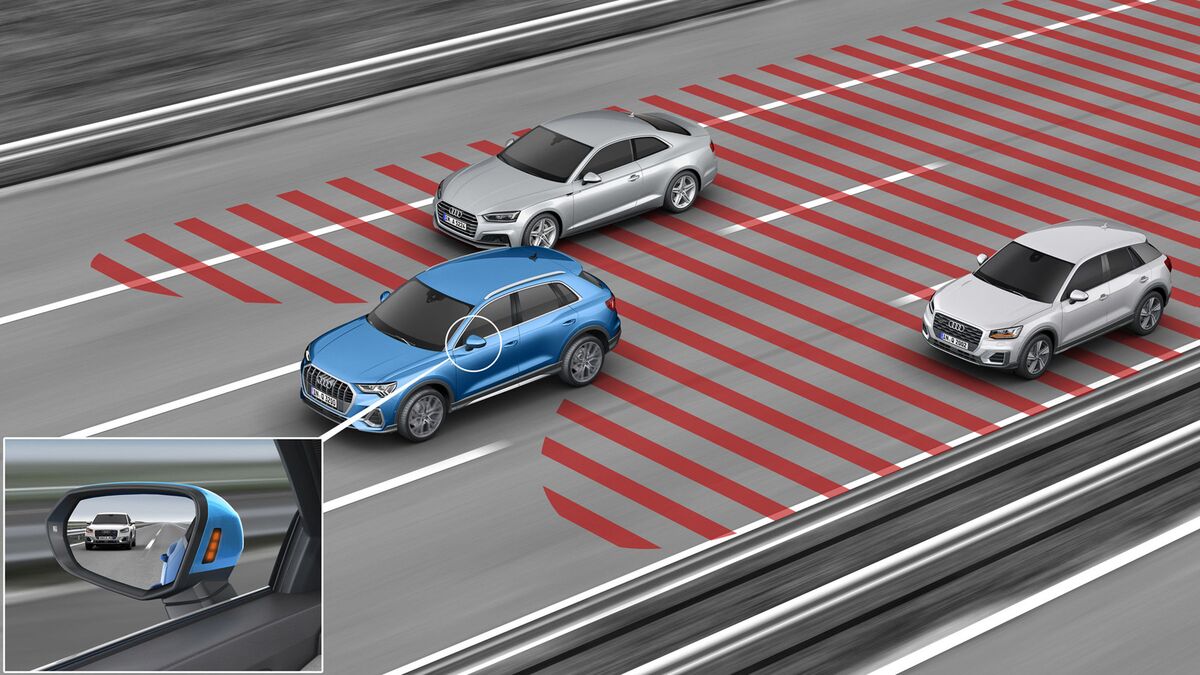
You can say goodbye to the days when the top safety feature for the best car in the snow was a trunk large enough to hold a bag of salt and a shovel. Today’s cars, trucks, and SUVs offer a wide array of safety and driver-assist features. Many of these aid snow driving while lowering stress.
Since 2013, government mandates required features like traction control, stability control, and anti-lock brakes to be standard on every passenger vehicle. The lion’s share of newer technologies is available on a wide range of new cars and SUVs. Some may even save you a few bucks on your car insurance.
We compiled a list of features contributing to better control and safety in snowy or icy conditions. Additionally, we threw in a few winter comfort/convenience features as well. Our picks for best snow sedans and snow SUVs offer some or most of them.
The List of Top Safety Features for Cars in Snow
- Adaptive headlights: Headlights that adapt can come in a couple of forms. One actually rotates the headlights to light the area in the direction in which the steering wheel gets turned. The other uses cornering lights mounted more to the side of the headlights. They illuminate the appropriate direction when you turn the steering wheel to the left or right — a great feature for any car driving in snow.
- Anti-lock brakes and stability control: These work hand in hand to help a vehicle maintain the intended course. Stability control detects when a vehicle veers from the planned course, applying the brake to whichever wheel or wheels will help bring the vehicle under control and return it to its intended path.
- Automatic high beams: By default, automatic high beams activate whenever the headlights turn on. A sensor detects the lights of nearby vehicles, switching off the high beams when it detects headlights or taillights.
- Automatic temperature control: We included this on the snow features list purely for its convenience. A set-it-and-forget-it bit of technology that means one less thing to fret over as you concentrate on your snow driving.
- Blind-spot monitoring: Driving in snow is tricky business. Blind-spot sensors detect vehicles on your flanks that you may not be able to see in your mirrors. This can keep you from swerving into an already occupied lane, including when driving in snow. One of the surest ways to lose control on a slippery road is to make a sudden steering adjustment to avoid a vehicle in the next lane. Another way to create havoc on a slippery road is stomping on the brakes, which the neighboring vehicle will surely do if you attempt to share its lane.
- Forward collision warning and emergency braking: This technology uses a combination of cameras, sensors, and lasers to detect hazards, including stopped vehicles on the road. It employs the anti-lock braking system to stop the car. More advanced systems can also detect pedestrians and cyclists.
- Ground clearance: This is the distance between the pavement and your vehicle’s undercarriage. More ground clearance is an advantage because you are less likely to plow the snow. More clearance also helps avoid hitting unseen hazards on a snow-covered road.
- Headlight washers and wipers: These wipers and washers clear car headlights of snow and road salt, delivering better illumination.
- Head-up display: A head-up display projects speed and other assorted images on the vehicle windshield or a panel just beneath the driver’s line of sight. Although it’s an information tool, it’s equally a safety feature, helping drivers keep their eyes on the road in wintery weather.
- Heated mirrors: A feature that melts fog, ice, and snow for a clearer image before driving a car in the snow.
- Heated seats and a heated steering wheel: They won’t save your life, but they will make life in freezing weather much more comfortable. Many vehicles even offer heated rear seats.
- Heated windshield and wipers: Neither of these is common, but both will save you time and energy when snow falls or ice forms.
- LED headlights and taillights: These provide brighter illumination than standard halogen ones. You can see farther ahead, and traffic behind you can see your taillights sooner.
- Rain-sensing wipers: The wipers automatically engage when the system detects moisture, including snow, on the windshield.
- Rear cross-traffic alert: This feature warns of approaching traffic from either side when you back up. Most parking lot fender benders occur when one car backs into an approaching vehicle or into its path. On slippery pavement, coming to a stop gets even more difficult, and this feature provides an advanced warning.
- Remote start: Starting your vehicle remotely won’t help in your efforts to drive in snowy or icy conditions. But getting the engine running, the heater working, and the windshield defroster going before entering your car makes for a more comfortable snow-driving experience.
- Snow tires: Car tires geared for driving in snow can save your life, including when driving on ice. If you are buying a new vehicle for winter driving, typically, the bottom line may not include them. The materials composing the tire and the tread pattern can tremendously affect a tire’s resistance to sliding.
Note: Tires are the most important safety component on your vehicle, whether on dry or slippery pavement.
RELATED: Car Tires Guide: Everything You Need to Know
How To Interpret Crash Test Scores
Although we didn’t base our picks for the best snow cars on crash test results, we did include the test results from the government’s National Highway Traffic Safety Administration (NHTSA) and the Insurance Institute for Highway Safety (IIHS). Here’s what you need to know.
NHTSA
NHTSA reports on three tests, scoring each using a system of stars. The best score is 5 stars, and the worst is one star. NHTSA scores each test individually and then also issues an overall score. The NHTSA tests:
- Frontal crash
- Side crash
- Rollover crash
IIHS
The IIHS currently reports on four main crash tests for cars, light trucks, minivans, and SUVs.
- Small overlap front: driver-side
- Small overlap front: passenger-side
- Moderate overlap front: updated test
- Side: updated test
The side-test protocol includes both the right and left sides; consequently, the side protocol could technically be called two tests for a total of five. However, the IIHS lumps the side tests into a single result for scoring purposes.
The IIHS scoring on each crash test is Good, Acceptable, Marginal, and Poor, in descending order.
TIP: IIHS changed its side crash-test protocol in 2021, specifying a heavier ram. Although the results of this new version of the test were shown in some vehicles’ results in the past couple of years, 2023 is the first year the IIHS figured those results into a vehicle’s scoring. Moreover, the “Moderate overlap front: updated test” also just became part of the scoring protocol in 2023. Before 2024, the IIHS performed six or more tests, the scores of which may still appear on a specific vehicle’s test results page. Going forward, the IIHS will only score the four tests listed above.
Beyond the crash tests, the IIHS evaluates headlights and vehicle-to-pedestrian front crash protection. Here, the scoring is Superior, Advanced, and Basic. Moreover, the LATCH child-seat anchors are also assessed.
Rather than reproducing all of the crash test data here, we’re condensing it to a simple ratio of Good/All Tests. So, if a car received five Good results and one Acceptable, it would receive a 5/6 result — 5 Good/6 Total Tests.
Models getting the highest marks in both the crash tests and the other evaluations earn the IIHS highest safety awards of Top Safety Pick (TSP) and Top Safety Pick+ (TSP+). We won’t include the numerical ratios on these top finishers.
All IIHS testing reflects 2025 models unless otherwise specified.
Best Cars for Driving in Snow
2025 Audi A5
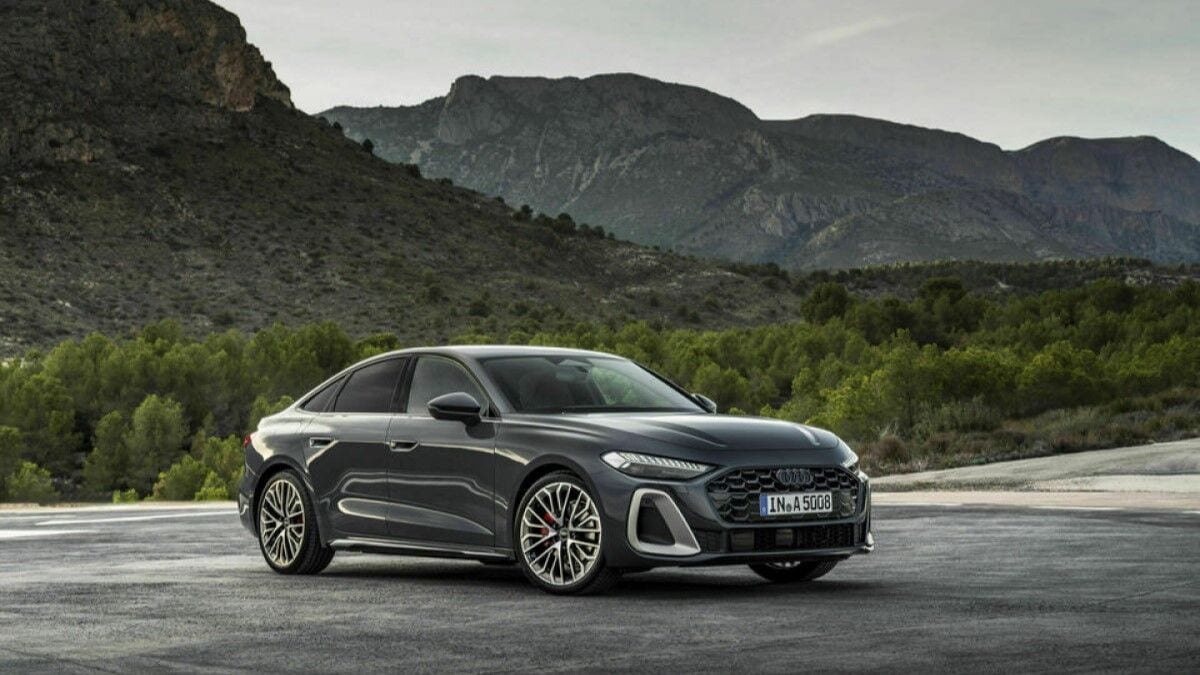
Best Value for Snow: $50,995 | Premium
Starting Price w/AWD: $50,995 | Expert Rating: 4.3
IIHS Rating: TSP+
The all-new Audi A5 is longer, wider, and roomier, and is only available as a sportback. The practical A5 delivers superb driving dynamics, and looks great doing it. Its standard all-wheel drive and array of winter-weather features made it a no-brainer for this list. Even in its entry-level trim, the A5 provides rain-sensing wipers, LED headlights with washers, power-adjustable heated side mirrors, heated front seats, a heated steering wheel, and tri-zone automatic climate control.
It also has a comprehensive list of advanced safety technology, like automatic emergency braking, lane-centering assist, lane-departure warning, and high-beam assist. We submit that the base Premium trim has sufficient content to make the A5 an ideal winter ride. However, if you have more room in your budget, the Premium Plus adds a surround-view camera and adaptive cruise assist, among other features. A 268-horsepower 4-cylinder engine mated to a 7-speed automatic transmission rotates the wheels.
2026 BMW 3 Series
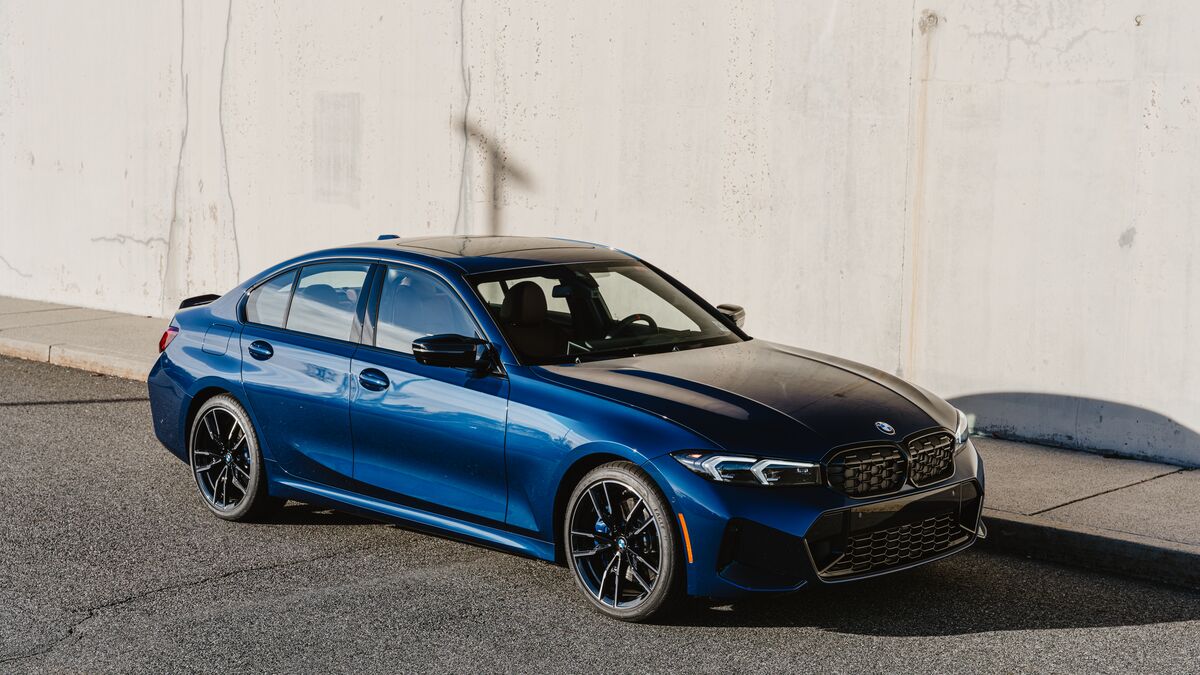
Best Value for Snow: $50,675 | 330i xDrive
Starting Price w/AWD: $50,675 | Expert Rating: 4.4
IIHS Rating: Good
Sitting atop the food chain of compact luxury sedans, the BMW 3 Series offers its xDrive all-wheel-drive system across its sedan lineup. All-wheel drive adds $2,000 to the bottom line of the entry-level 330i. That makes the base price of the 330i xDrive $50,675. A 255-hp 2.0-liter turbocharged 4-cylinder engine mated to an 8-speed automatic transmission delivers the go.
Forward collision warning, automatic emergency braking, lane-keeping assist, and rain-sensing wipers come standard on every 3 Series model. Opting for the $1,950 Premium package adds active blind-spot monitoring, lane-departure warning, frontal collision warning, and more.
2026 Cadillac CT4
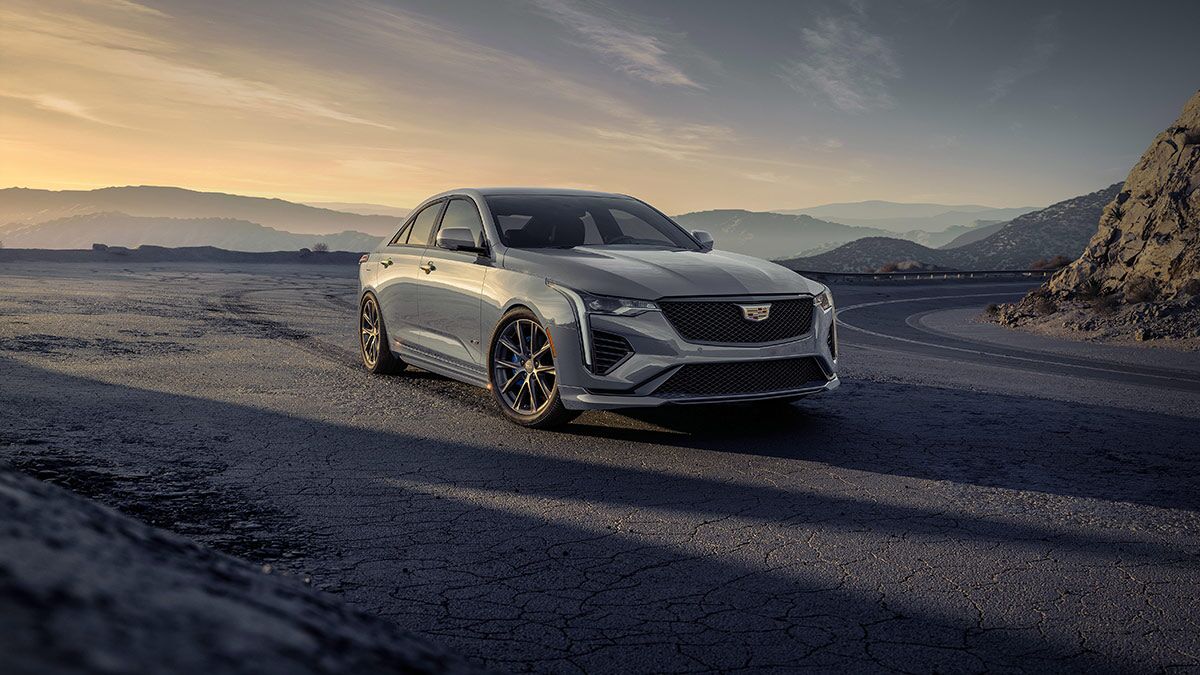
Best Value for Snow: $39,095 | Luxury AWD
Starting Price w/AWD: $39,095 | Expert Rating: 3.7
IIHS Rating: Not rated
We like the CT4 for its accessibility — it is one of the more affordable compact luxury sedans. Moreover, when equipped with its available all-wheel-drive system, it handles snow and mud with the best of them. Adding all-wheel drive to the entry-level Luxury trim brings the total to $39,095. At that price point, the CT4 delivers heated outboard mirrors, LED headlights, dual-zone automatic climate control, and remote start. Also standard is a bundle of advanced safety tech like lane-keeping assist, blind-spot monitoring, rear cross-traffic alert, and high-beam assist. The standard Cold Weather Package, which includes heated front seats and steering wheel, is standard with the Luxury trim level.
For about $4,000 more, you can move up to the Premium Luxury trim. Among its gains are front/rear park assist, rain-sensing wipers, and reverse automatic braking. Moving up a trim also makes available a higher-performance 310-hp turbocharged engine in place of the standard 237-hp turbocharged mill. We’d stick with the Luxury trim with the Cold Weather Package.
2026 Mazda3 Sedan
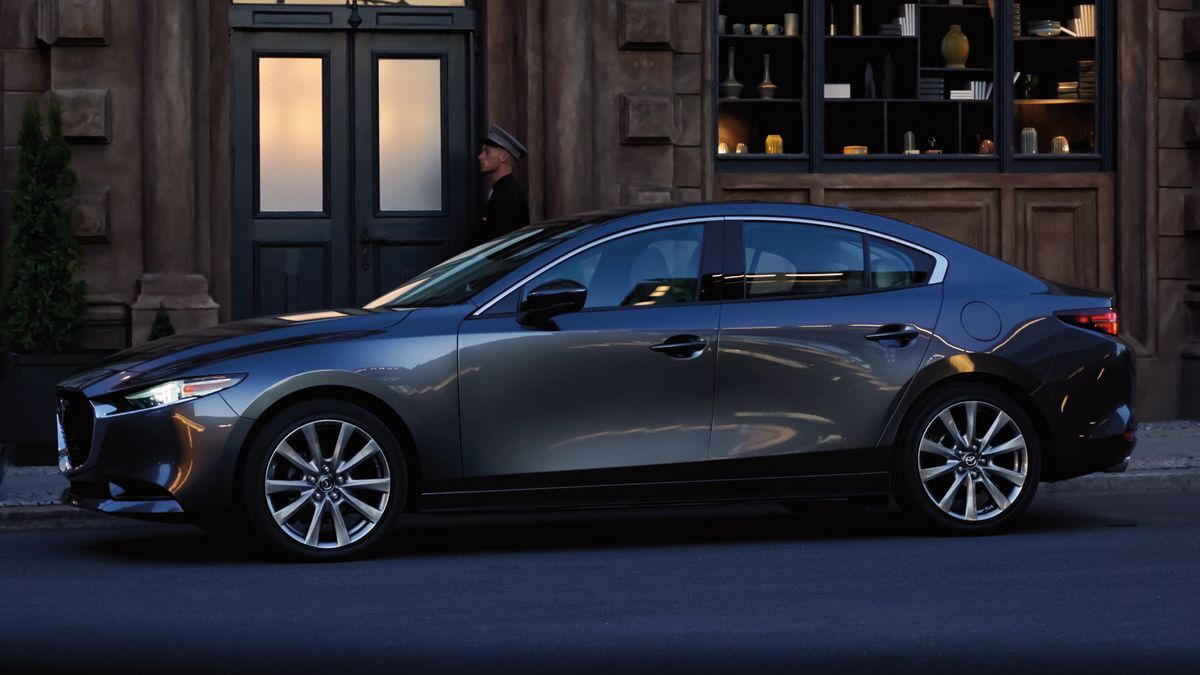
Best Value for Snow: $31,445 | 2.5 S Carbon Edition AWD
Starting Price w/AWD: $31,445 | Expert Rating: 4.1
IIHS Rating: TSP+
You must move up to the Carbon Edition among Mazda3 non-turbo models to get all-wheel drive. The 2.5 S Carbon and all turbo models have it as standard. Every Mazda3 comes standard with blind-spot monitoring, automatic emergency braking, and automatic high beams, among other features in its i-Activsense suite of safety/driver-assist technologies — all of which are great for snow driving.
The Carbon Edition also boasts standard LED headlights, taillights, rain-sensing wipers, and heated front seats. Thrust is from a 191-hp 2.5-liter 4-cylinder engine. A 6-speed automatic transmission sends engine output to all four wheels.
2025 Nissan Altima

Best Value for Snow: $30,175 | Altima SV AWD
Starting Price w/AWD: $30,175 | Expert Rating: 4.1
IIHS Rating: Good
While we await news on the fate of the 2026 Altima, let’s focus on the 2025 model. Except for the entry-level S grade, every Nissan Altima model with the 188-hp 2.5-liter 4-cylinder engine can be fitted with all-wheel drive for driving in snow. However, you lose some horses as the engine’s output drops to 182 hp. The most affordable model with all-wheel drive is the SV.
The total base price with all-wheel drive comes to $30,175. Automatic high beams, LED headlights, remote engine start, forward collision warning, automatic front emergency braking, blind-spot warning, rear cross-traffic alert, and automatic rear braking are standard. To get heated front seats, heated outboard mirrors, and a bunch of other goodies, you must pony up an additional $2,390 for the Premium Package.
2026 Toyota Camry
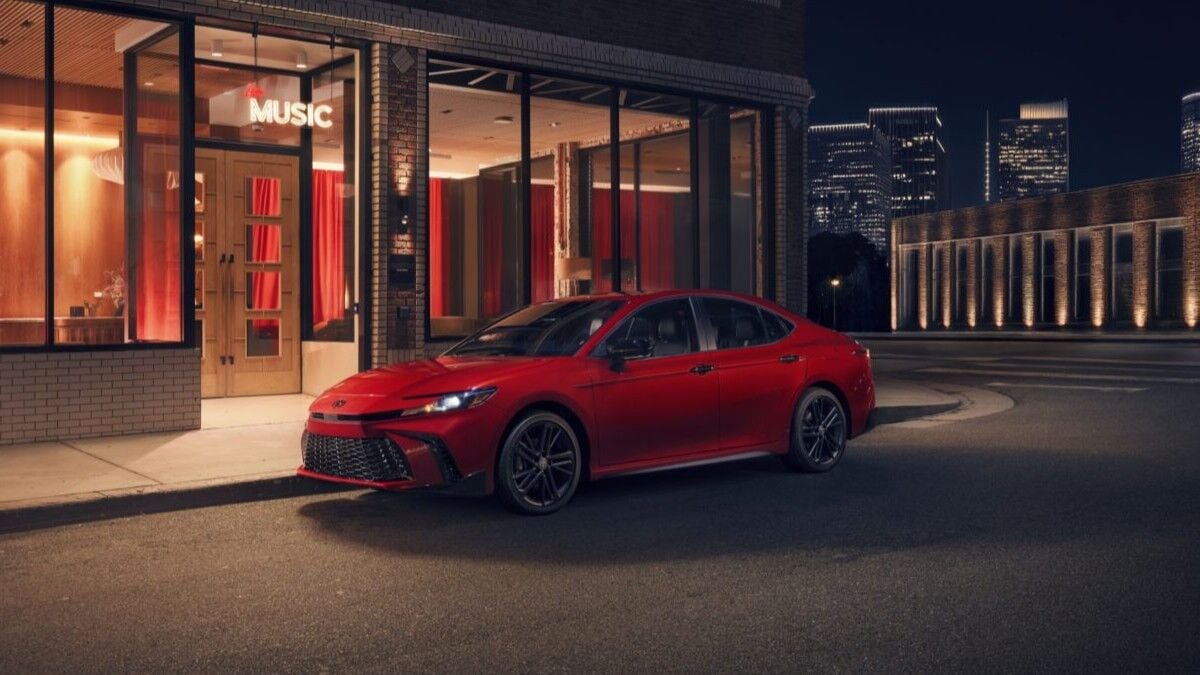
Best Value for Snow: $31,720 | LE AWD
Starting Price w/AWD: $31,720 | Expert Rating: 4.8
IIHS Rating: TSP+
Toyota totally redesigned the Camry for 2025 with all-wheel drive available on every grade. Getting it on the entry-level LE only adds $1,525 to the $30,195 base price. The Toyota Camry comes standard with Safety Sense 3.0, a technology suite that includes forward collision warning, automatic front emergency braking, lane-departure alert, lane-tracing assist, automatic high beams, and more. Also standard are blind-spot monitoring and rear cross-traffic alert. Helping make it one of the better cars for driving in snow, the Camry LE’s other winter features are LED headlights, LED taillights, and dual-zone automatic climate control. If you want to add heated front seats and steering wheel, you can add the Cold Weather Package, which comes bundled with the Convenience Package, for $1,660.
Every new Camry arrives as a hybrid with a 225-hp (232-hp with all-wheel drive) 4-cylinder hybrid system matched to a continuously variable automatic transmission.
2026 Volvo V60 Cross Country
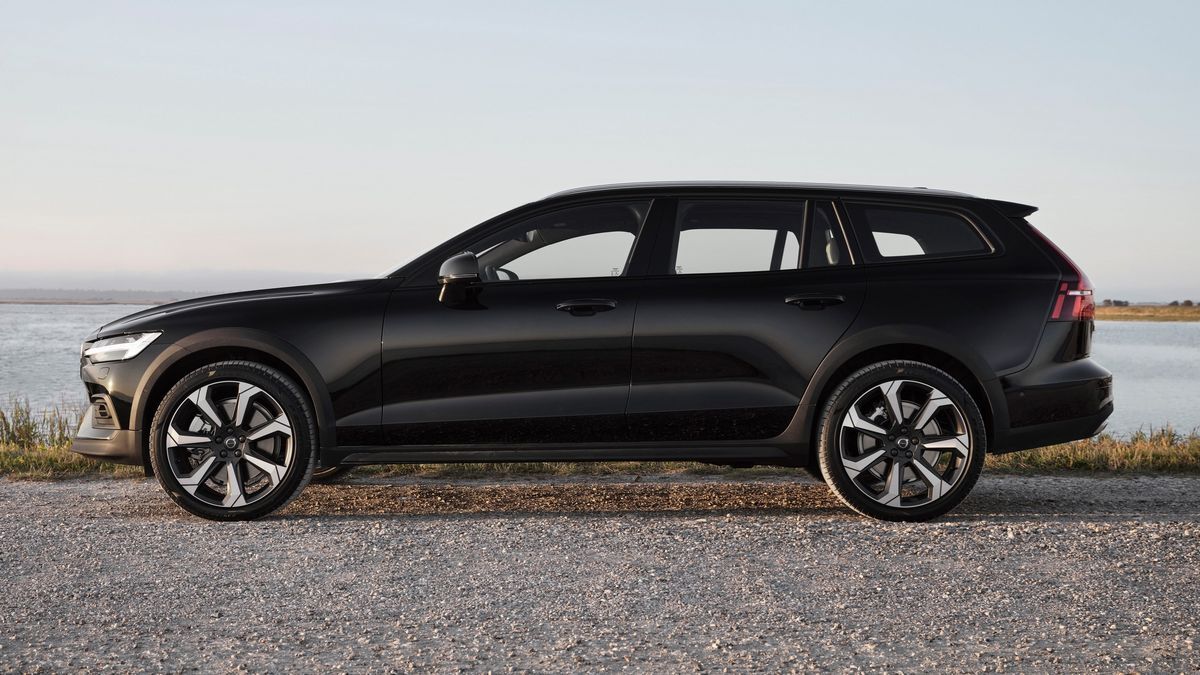
Best Value for Snow: $53,495 | Plus + Climate Package
Starting Price w/AWD: $61,995 | Expert Rating: 4.3
IIHS Rating: 3/3 Good
Classified as compact, the Volvo V60 Cross Country is a wagon that comes standard with all-wheel drive and an impressive 7.8 inches of ground clearance. Also standard are adaptive LED headlights, rain-sensing wipers, blind-spot monitor with steering assist, rear cross-traffic alert, front collision mitigation support, heated front seats, remote start, and a slippery road alert.
That terrific roster of standard equipment, plus this Volvo’s ground clearance, makes this one of the best cars for snow. We recommend picking up heated rear seats, heated windshield washers, and a heated steering wheel with the $750 Climate Package.
Best SUVs for Driving in Snow
2026 Acura RDX
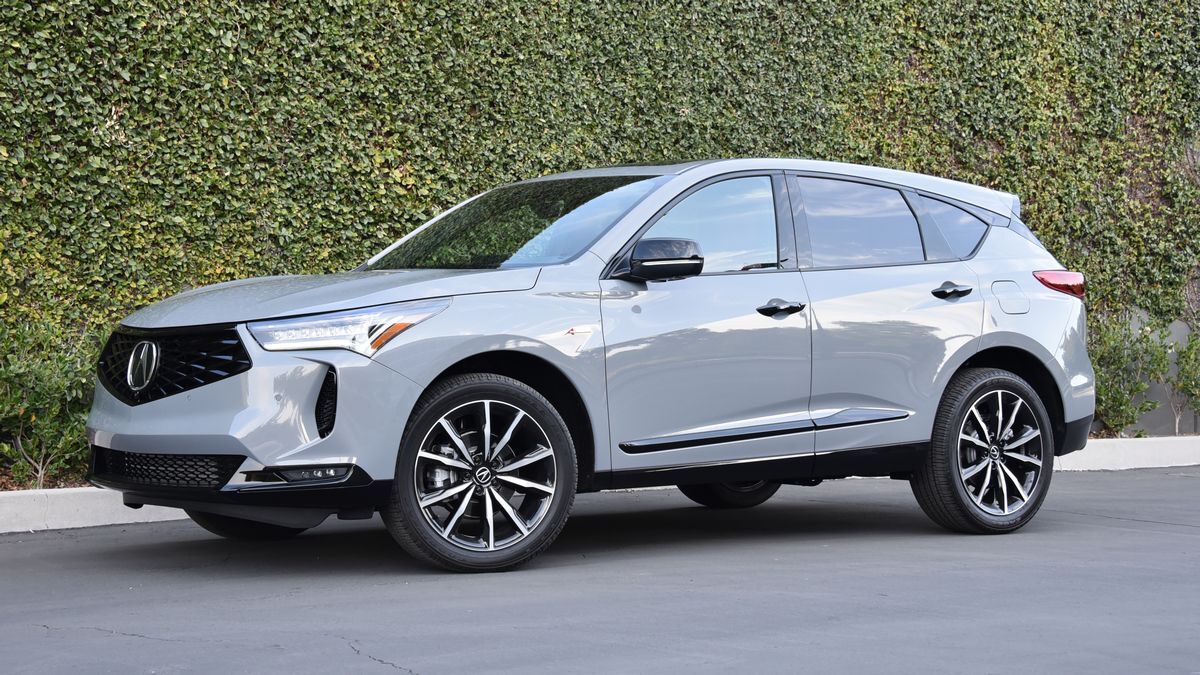
Best Value for Snow: $46,450 | RDX
Starting Price w/AWD: $46,450 | Expert Rating: 4.6
IIHS Rating: TSP
Every RDX comes with Acura’s Super Handling All-Wheel Drive (SH-AWD). It employs several tricks to increase capability and traction. It’s rather complicated, yet the result is also an efficient system. As much as 90% of torque can go to just one rear wheel.
Also featured on every new RDX is decent ground clearance (8.2 inches). Standard are forward collision warning, automatic emergency braking, LED headlights, heated outboard mirrors, and heated front seats. Moving up to the Technology trim level ($49,050) adds a rear camera washer, blind-spot monitoring, rear cross-traffic alert, and more. Check the Advance trim level ($54,200) to add rain-sensing wipers, LED fog lights, windshield wiper de-icer, and more. The engine is a 272-hp 2.0-liter turbo 4-cylinder mated to a 10-speed automatic transmission.
2026 Chevrolet Tahoe
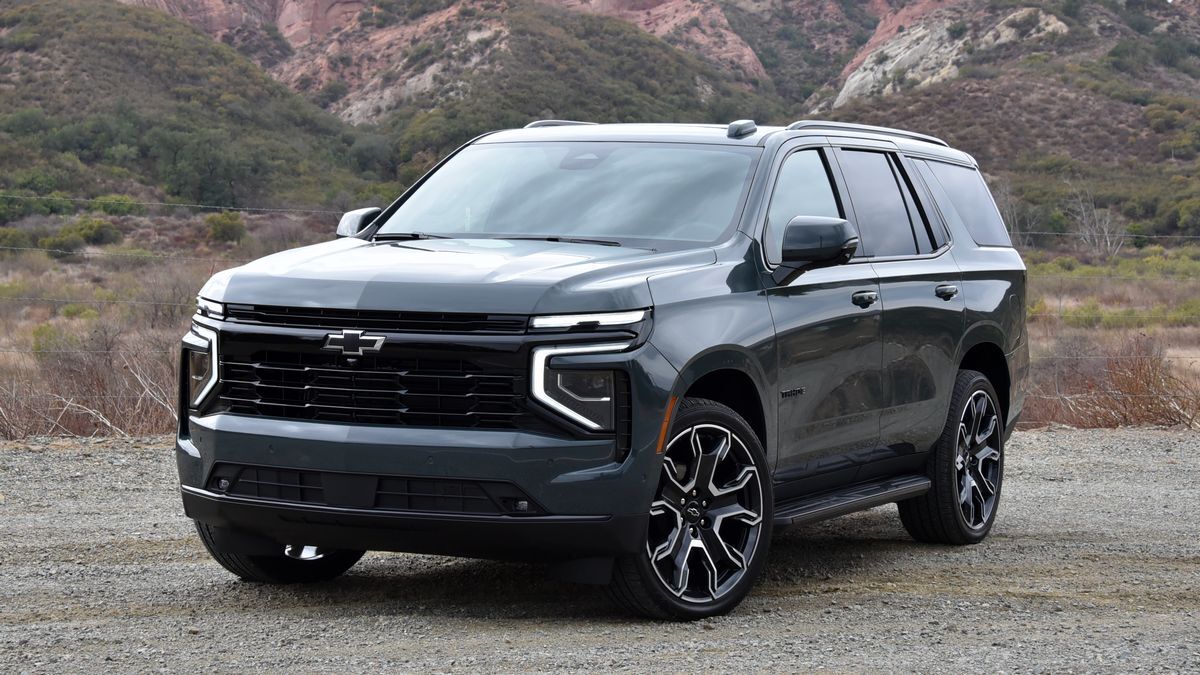
Best Value for Snow: $65,995 | 4WD Tahoe LS
Starting Price w/4WD: $65,995 | Expert Rating: 4.7
IIHS Rating: Good/Acceptable
Chevy’s Tahoe comes in six trim levels. All of them can be fitted with (standard in the Z71) 4-wheel drive for driving in snow and other hazardous conditions. Adding it to the entry-level LS grade increases the $62,995 bottom line by $3,000.
Comfortable and roomy, the Chevrolet Tahoe LS has impressive ground clearance (7.9 inches). It comes with rain-sensing wipers, forward collision warning, front-emergency braking, LED headlights and taillights, and remote start. Thrust is generated by a 355-hp 5.3-liter V8 mated to a 10-speed automatic transmission. If the 2026 model hasn’t gone on sale yet in your area, the 2025 model is also a great choice.
Find a Chevrolet Tahoe near you
2025 Ford Bronco Sport
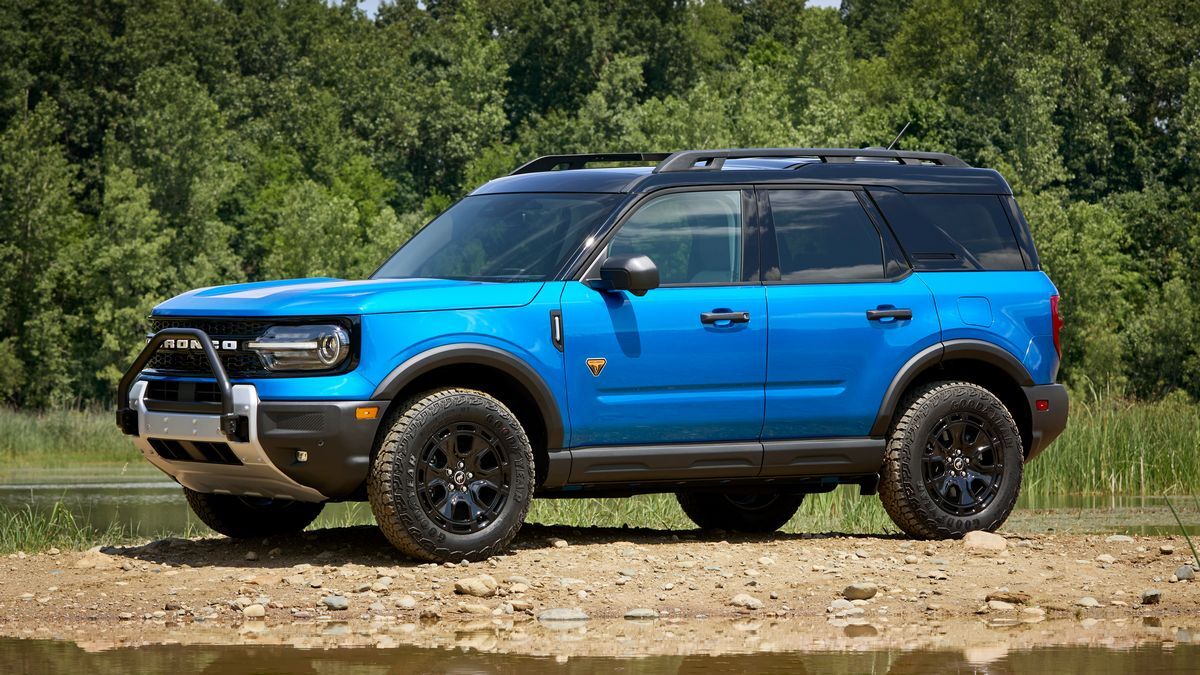
Best Value for Snow: $38,790 | Outer Banks
Starting Price w/AWD: $33,690 | Expert Rating: 4.6
IIHS Rating: Good
The Ford Bronco Sport pops right out of the box with all-wheel drive for getting around in the snow. Not as off-road capable as its big brother, the 4-wheel-drive Bronco, the Bronco Sport is well suited for battling snow, mud, and dirt. The Big Bend base model provides five driving modes, LED exterior lights, high-beam assist, and Ford’s Co-Pilot360 driver aids bundle. It includes forward collision warning with automatic braking, lane-departure warning, and lane-keeping assist. Blind-spot monitoring and rear cross-traffic alert are standard as well.
We recommend stepping up to the Outer Banks. It gains you heated outboard mirrors, heated front seats, a rear camera washer, and dual-zone automatic climate control. Also standard are LED fog lights, a heated leather-wrapped steering wheel, and rain-sensing wipers. A 1.5-liter turbocharged 3-cylinder engine married to an 8-speed automatic transmission spins the wheels.
Find a Ford Bronco Sport near you
2026 Honda CR-V
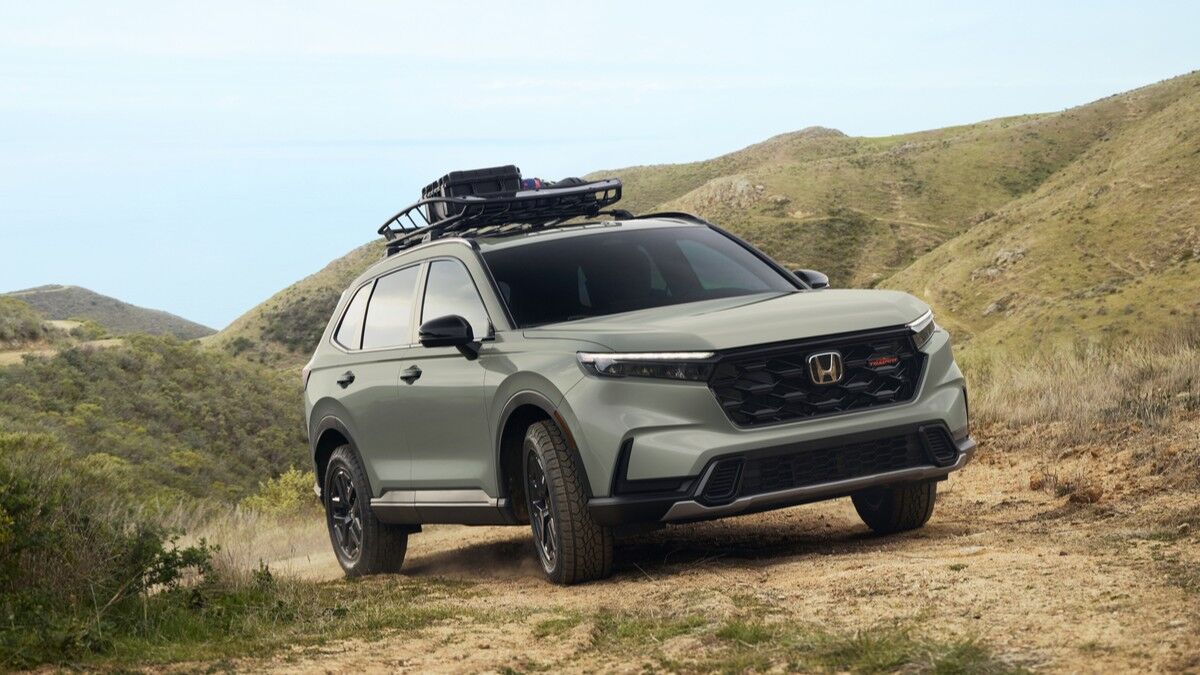
Best Value for Snow: $36,100 | EX AWD
Starting Price w/AWD: $33,870 | Expert Rating: 4.8
IIHS Rating: TSP
Every Honda CR-V trim level is available with all-wheel drive ($1,500), except the Sport Touring Hybrid, on which it is standard. Adding all-wheel drive increases ground clearance to 8.2 inches.
The EX is the second most affordable trim level, and it comes very nicely equipped. Forward collision warning and front-emergency braking are standard, as are other Honda Sensing driver-assist features. Also standard are LED headlights and taillights.
This trim level comes with heated front seats, heated outboard mirrors, blind-spot monitoring, and rear cross-traffic alert. It also includes LED fog lights. Power is generated by a 190-hp 1.5-liter turbocharged 4-cylinder engine managed through an automatic transmission.
2026 Hyundai Kona
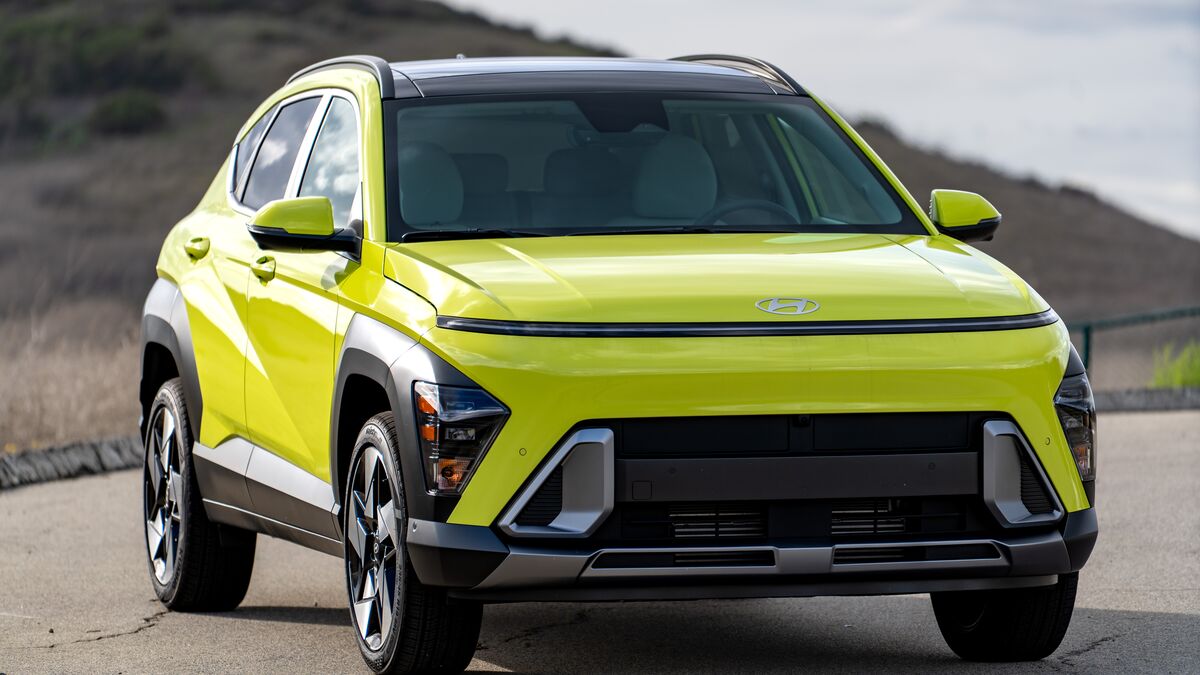
Best Value for Snow: $28,750 | SEL AWD
Starting Price w/AWD: $28,450 | Expert Rating: 4.8
IIHS Rating: TSP+
We named the 2025 Kona as the Kelley Blue Book Best Buy in its class. Opting for all-wheel drive on any Hyundai Kona grade adds $1,500 to the bottom line, making the base SE all-wheel drive $28,450. This subcompact model has a surprising amount of passenger and cargo space. All-wheel-drive versions have 8.1 inches of ground clearance and come standard with front collision warning, automatic emergency braking, lane-keeping assist, blind-spot monitoring, and more. Another winter feature on the base Kona is LED headlights with high-beam assist.
However, spending another $1,025 to move up to the SEL Sport grade adds heated mirrors with integrated turn signals, heated front seats, dual-zone automatic climate control, and much more. Power comes from a 147-hp 2.0-liter 4-cylinder engine connected to an automatic transmission.
2026 Hyundai Santa Cruz

Best Value for Snow: $34,250 | SEL AWD
Starting Price w/AWD: $32,600 | Expert Rating: 4.2
IIHS Rating: TSP (2026)
No, the Hyundai Santa Cruz isn’t an SUV; however, sharing its platform with the Tucson SUV, it has an SUV’s comfort and features. Although pickup trucks aren’t the ideal snow vehicles, we like this small urban truck a lot. All-wheel drive is standard on the upper grades, and a $1,500 upcharge on the SE and SEL. Beyond all-wheel drive, the base SE isn’t brimming with snow features. It does provide LED taillights, remote keyless entry, LED headlights with high-beam assist, and several driver aids, including forward collision warning with automatic emergency braking, lane-keeping assist, rear cross-traffic avoidance assist, and more.
However, making the $1,650 move to the SEL adds heated front seats, heated outboard mirrors, dual-zone automatic climate control, remote engine start, and more. A 191-hp 2.5-liter 4-cylinder engine sends output to the wheels via an 8-speed automatic transmission.
Find a Hyundai Santa Cruz near you
2025 Jeep Grand Cherokee Laredo/4xe
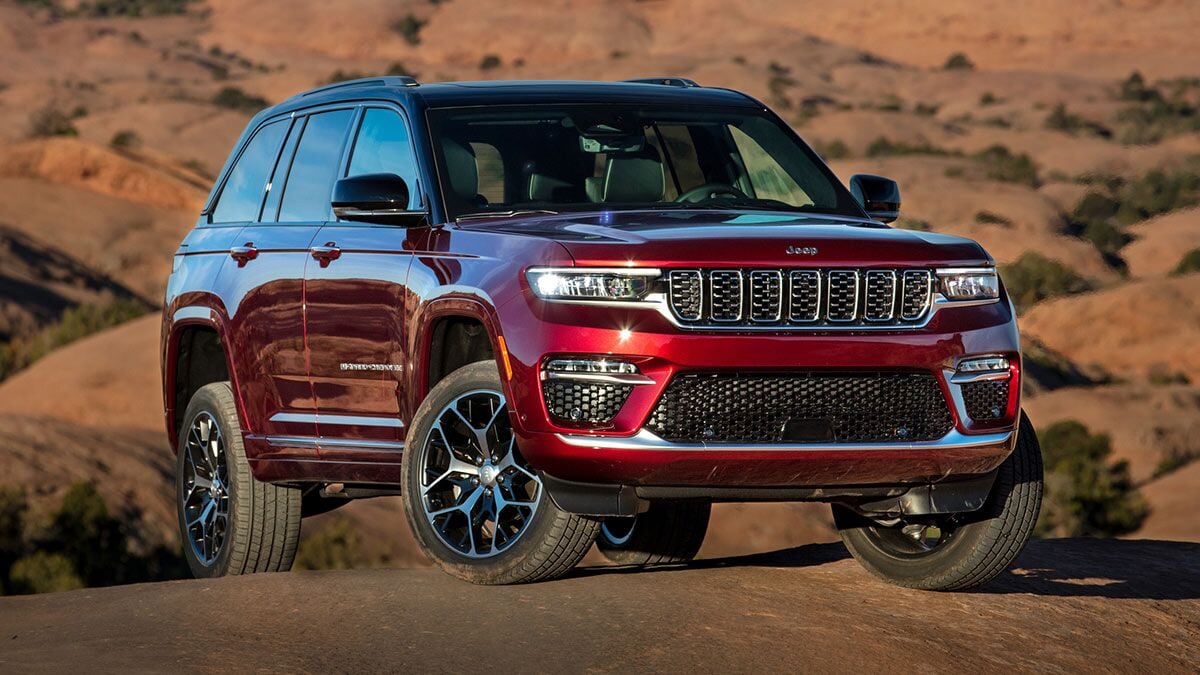
Best Value for Snow: $42,625 | Laredo + Package
Starting Price w/4WD: $41,630 | Expert Rating: 4.3
IIHS Rating: TSP (2024)
The 2026 Grand Cherokee is just around the corner. In the meantime, the 2025 model is a great choice for driving in snow. Not only is there the Jeep Grand Cherokee, but there is also the plug-in hybrid (PHEV) version, the Jeep Grand Cherokee 4xe. Every bit as off-road capable as the gas-only Grand Cherokee, the vehicle comes standard with the Quadra-Trac II active 4WD system, which uses a 2-speed transfer case. In addition to its 4-wheel-drive system, the entry-level 4xe’s snow creds include LED exterior lights, heated front/rear seats, a heated steering wheel, remote start, and heated outboard mirrors. It starts at $62,485.
Standard driver aids include forward collision warning with automatic emergency braking, lane-keeping assist, blind-spot monitoring, and rear cross-traffic alert. Adaptive cruise control and high-beam assist are also included. A 2.0-liter turbocharged 4-cylinder engine and two electric motors generate the thrust, delivering it to all four wheels via an 8-speed automatic transmission.
If the 4xe is beyond your budget, we recommend the 4-wheel-drive 2025 Grand Cherokee Laredo. This Grand Cherokee has a starting price of $41,630 with 4-wheel drive.
To gain heated front seats and steering wheel, among other goodies, look for the Luxury Tech Group I ($1,795) on the Laredo. Heated seats and steering wheel are standard with the 4xe. Providing power is a 293-hp 3.6-liter V6 mated to an 8-speed automatic transmission.
Find a Jeep Grand Cherokee near you
2025 Kia Telluride
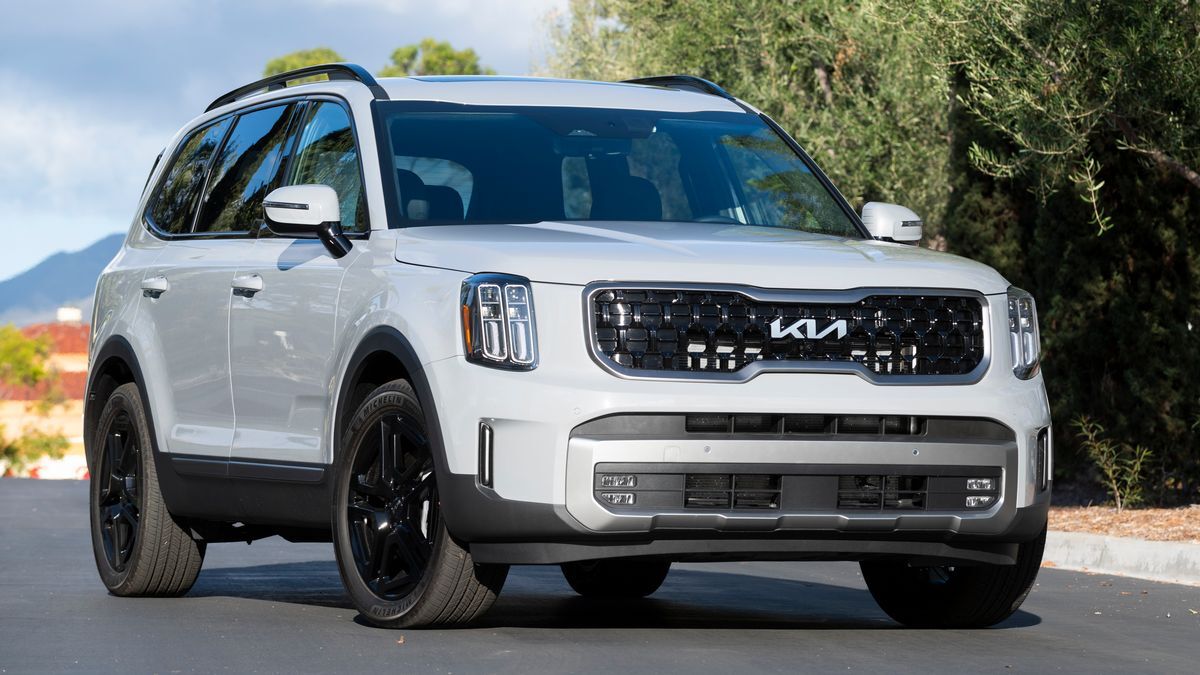
Best Value for Snow: $45,505 | EX AWD
Starting Price w/AWD: $42,885 | Expert Rating: 4.8
IIHS Rating: TSP+
In anticipation of the all-new Telluride that’s coming for 2027, there is no 2026 model. In the meantime, the 2025 is worth a serious look. Our Expert Rating of 4.8, and that we named it the Best Buy Midsize SUV for 2025, should tell you something about our opinion of the 3-row Kia Telluride. It blows us away. Kia offers all-wheel drive throughout the Telluride lineup (except the base LX). That makes the S trim the starting point for all-wheel drive at $42,885.
It has eight inches of ground clearance, remote start, heated mirrors, forward collision warning, automatic emergency braking, blind-spot monitor, and rear cross-traffic alert. You must step up to the EX trim, which we recommend, to gain or qualify for other features like LED headlights, heated seats, and automatic high beams. The engine is a 291-hp 3.6-liter V6. An 8-speed automatic transmission switches the cogs.
2026 Mercedes-Benz GLA 250

Best Value for Snow: $44,750 | GLA 250 4Matic
Starting Price w/AWD: $44,750 | Expert Rating: 4.5
IIHS Rating: Not rated
Serving as the brand’s entry into SUVs, the Mercedes-Benz GLA’s one model can be upgraded to all-wheel drive (4Matic in Mercedes speak) for $2,000. Consequently, the GLA 250 jumps from $42,750 to $44,750 with the 4Matic system.
Among its standard features: heated mirrors, cross-wind assist, front collision warning, automatic emergency braking, and blind-spot monitoring. Also included are LED headlights and taillights, and rain-sensing wipers. In addition, Mercedes offers heated front seats for $500, and a Winter Package with heated steering wheel and windshield washer nozzles for $450. Delivering the go is a 221-hp 2.0-liter turbocharged 4-cylinder engine joined to an 8-speed automatic transmission.
Find a Mercedes-Benz GLA near you
2026 Subaru Forester
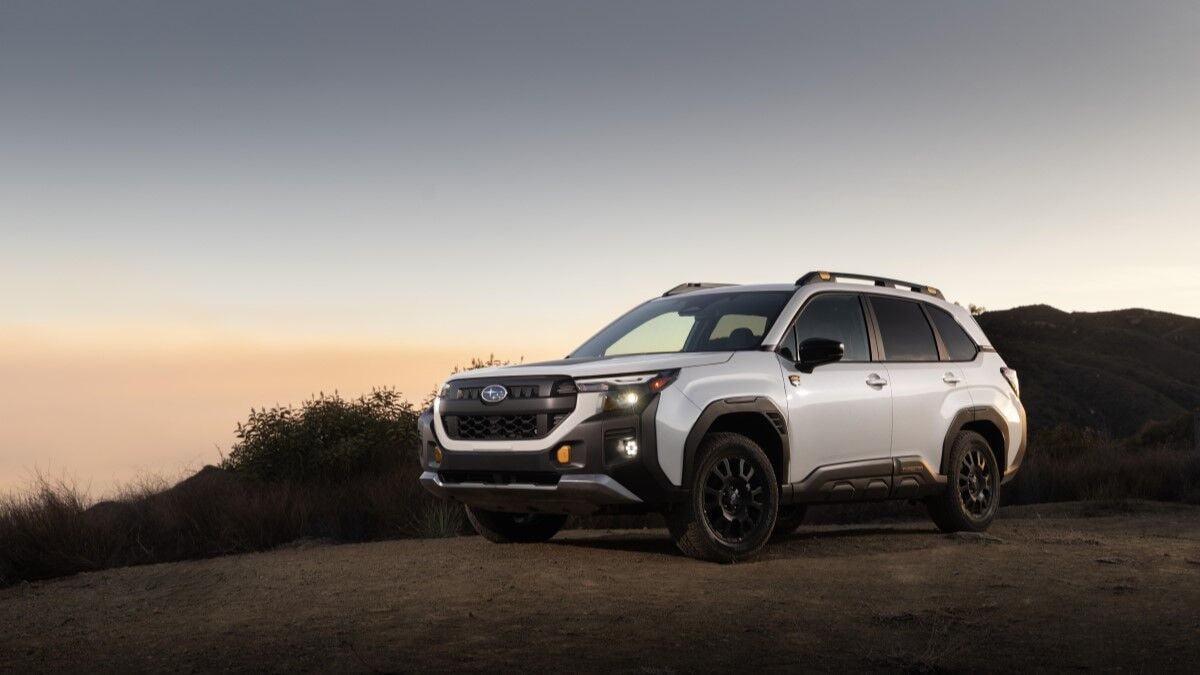
Best Value for Snow: $34,835 | Premium
Starting Price w/AWD: $31,445 | Expert Rating: 4.4
IIHS Rating: TSP+
Every Subaru Forester boasts standard all-wheel drive with impressive ground clearance (8.7 inches). LED adaptive headlights, automatic high beams, automatic climate control, a rearview camera washer, and forward collision warning with automatic emergency braking are included.
You must move up to the Premium trim to qualify for blind-spot monitoring and rear cross-traffic alert. Also included in the Premium are fog lights, windshield wiper de-icer, heated front seats, and heated outboard mirrors. We think moving up is worth it. A 182-hp 2.5-liter 4-cylinder engine sends its output to the wheels via an automatic transmission (CVT).
Find a Subaru Forester near you
2026 Subaru Outback
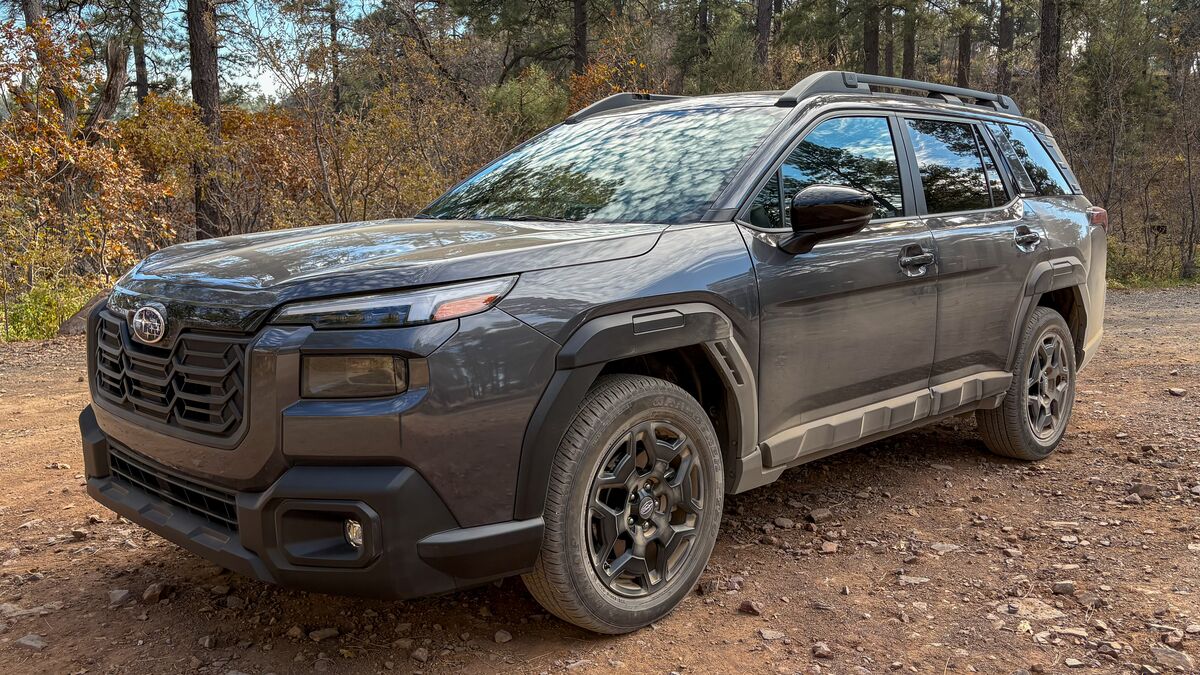
Best Value for Snow: $36,445 | Premium
Starting Price: $36,445 | Expert Rating: 4.6
IIHS Rating: Not yet rated
All-new for 2026, the Subaru Outback sheds its wagonlike exterior but doesn’t lose an ounce of its winter driving cred. Every Subaru Outback comes out of the box with all-wheel drive standard, along with 8.7 inches of ground clearance. That’s what makes this a great — and the best — car for snow. Included are a snow/mud X-Mode transmission setting, forward collision warning with automatic emergency braking, adaptive cruise control, lane centering, lane departure warning, adaptive LED headlights, and automatic high beams. Every Outback also comes standard with heated front seats, windshield wiper de-icers, and heated side mirrors. Move up to the Limited grade for heated steering wheel and rear seats. A 180-hp flat 4-cylinder engine uses a CVT to usher power to the wheels. If your local Subaru dealership doesn’t have the new Outback in stock, the outgoing 2025 Outback is also an excellent choice.
Find a Subaru Outback near you
2025 Toyota RAV4 Hybrid
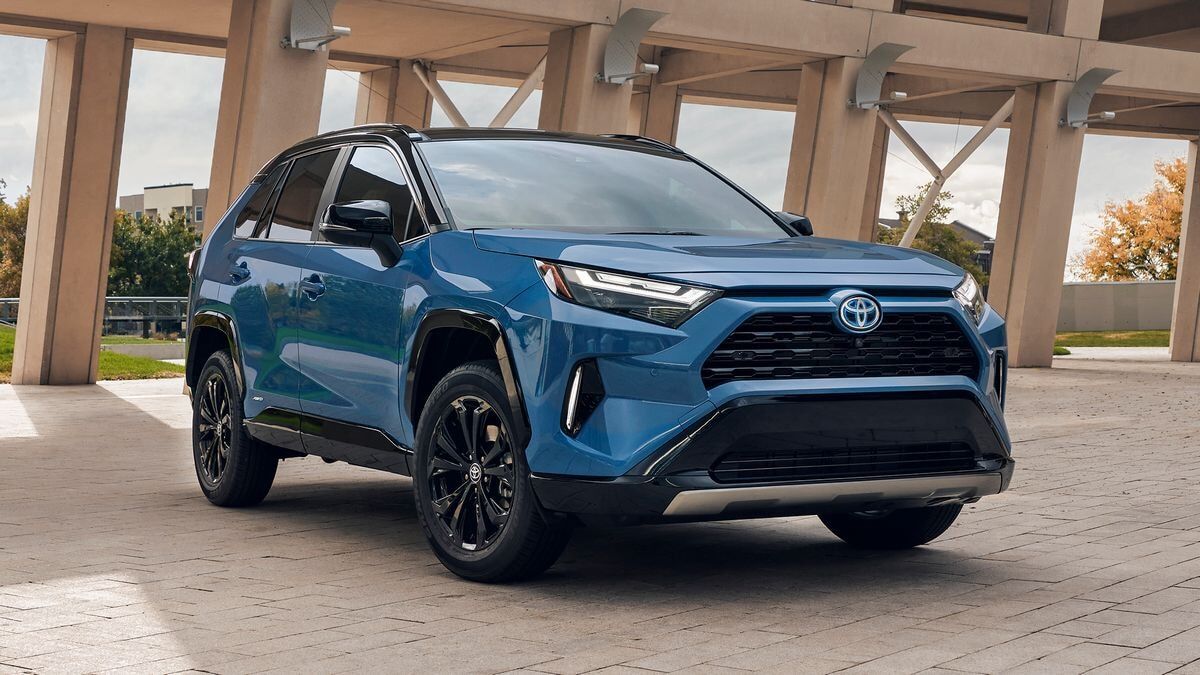
Best Value for Snow: $35,810 | Hybrid XLE
Base Price w/AWD: $32,650 | Expert Rating: 4.6
IIHS Rating: TSP (2023)
All-wheel drive comes standard on every Toyota RAV4 Hybrid, including the entry-level LE. It has 8.1 inches of ground clearance and comes standard with LED headlights and taillights, forward collision warning with emergency braking, and automatic high beams.
We recommend you step up to the hybrid XLE ($35,810). It adds blind-spot monitoring, rear cross-traffic alert, heated mirrors, and more. Step up to the XLE Premium ($38,700), and you can add the Weather Package ($1,075) with heated front seats, a heated steering wheel, and rain-sensing wipers. Other features, such as heated rear seats and adaptive headlights, require moving up the trim level ladder. The 2.5-liter 4-cylinder engine and hybrid system conspire to produce 219 hp. An automatic transmission sends power to the wheels. You can even step up to the Hybrid Woodland Edition ($37,520), which adds off-road-tuned suspension, all-terrain tires, and all-season mats. Expert tip: An all-new 2026 RAV4 is coming soon. You might be able to find some great deals on the outgoing 2025 models.
2026 Toyota Sienna

Best Value for Snow: $48,315 | XLE AWD
Base Price w/AWD: $43,615 | Expert Rating: 4.7
IIHS Rating: TSP (2024)
No, the Toyota Sienna isn’t an SUV. However, we do love it, particularly with all-wheel drive. The entire lineup uses a hybrid powertrain, and you can get all trim levels with all-wheel drive ($2,000). The entry-level LE trim with all-wheel drive starts at $43,615.
However, we recommend stepping up one grade to the 7-passenger XLE all-wheel drive. Among our snow-safety features are LED headlights, fog lights, taillights, automatic high beams, and heated mirrors. The XLE comes with remote start, heated front seats, and rain-sensing wipers. Also included are 4-zone automatic climate control and a surround-view camera. You’ll have to shop for a higher trim level to get a heated steering wheel. The Sienna has 6.3 inches of ground clearance. The Woodland Edition increases ground clearance to 6.9 inches.
The Sienna comes standard with the Toyota Safety Sense 2.0. It includes pre-collision with pedestrian detection, blind-spot monitor, rear cross-traffic alert, front and rear parking assist, adaptive cruise control, and lane-departure warning. The hybrid system provides 245 combined horsepower.


